 |
| April 26, 2022 | Volume 18 Issue 16 |
Designfax weekly eMagazine
Archives
Partners
Manufacturing Center
Product Spotlight
Modern Applications News
Metalworking Ideas For
Today's Job Shops
Tooling and Production
Strategies for large
metalworking plants
First Lexus all-electric: 2023 RZ 450e
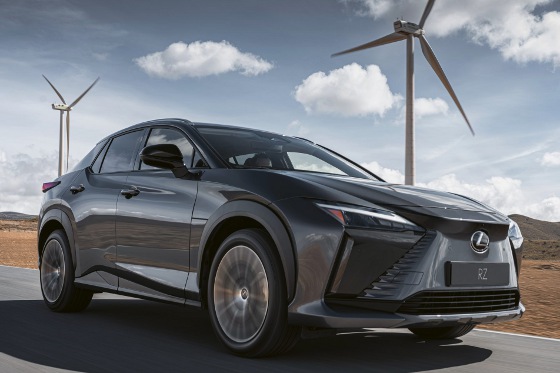
Lexus has graduated from offering hybrids to its first globally available* battery-electric vehicle (BEV). Slightly smaller than the gas-powered RX SUV, the dual-motor, all-wheel-drive RZ 450e is a luxury five-seat crossover with dynamic driving characteristics and a forward-thinking technology suite. The current U.S. manufacturer-estimated range is up to 225 miles with 18-in. tires.
Lexus' design concept is called "Seamless E-Motion," which the company says expresses the "seamless acceleration and a dynamic sense of torque unique to a BEV." Overall, the car seems to borrow design cues from the new Toyota bZ4X, also an all-electric car.
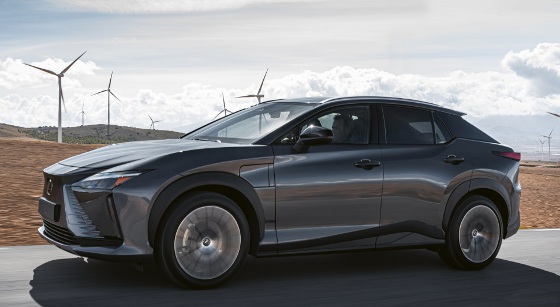
Lexus describes the vehicle as having a "spindle" shape that generates a distinctive roof spoiler to suppress aerodynamic force acting on the body in a crosswind. The center of the roof is shaped to allow air to flow smoothly from the sloped rear glass surface to the rear of the vehicle. The ducktail shape on the end of the trunk reduces aerodynamic drag by balancing the aft air flow. In addition, the generated downforce contributes to a stable driving feel. An undercover is used to flatten the underbody to reduce aerodynamic drag. The grille uses a grille shutter to improve aerodynamic efficiency.
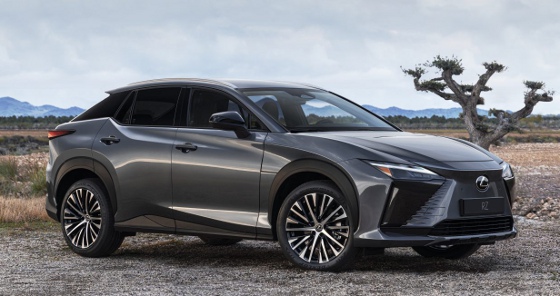
From the side, the front fenders wrap around the wheels and tires, then flow rearward to express a powerful forward-moving momentum. The strong three-dimensional shape over the rear fenders emphasizes the tires' width. The doors have heavily sculpted shapes.
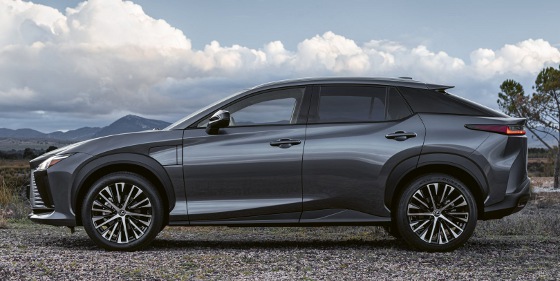
The rear of the BEV features a clean and simple horizontal design matched to hips highlighting the wide stance; it is a look that accentuates the RZ's torque-filled performance identity. Five exterior colors are available, along with a much more distinctive two-tone color scheme option that lays solid black from the front of the spindle body to the upper hood and roof.
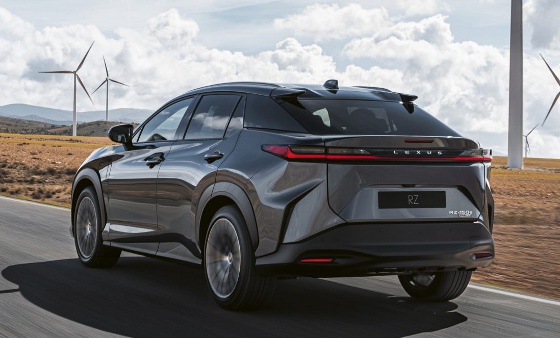
The high-precision motor torque control and optimal battery and motor placement help to achieve ideal weight distribution and high response. The use of BEV-exclusive, high-capacity batteries and silicon carbide power semiconductor elements in the inverter, as well as the incorporation of low-loss technologies cultivated in the development of HEVs, contribute to extending the single-charge cruise range of the vehicle.
DIRECT4 distribution control and the newly developed high-output electronic axle (eAxle) motor continuously control the drive force of the four wheels with high precision. This system works according to the ground contact load of the vehicle regardless of road surface and driving conditions to achieve an exhilarating driving experience in line with the driver's intention. The cars front motor delivers 150 kW of power, while the rear provides 80 kW (230 kW total).
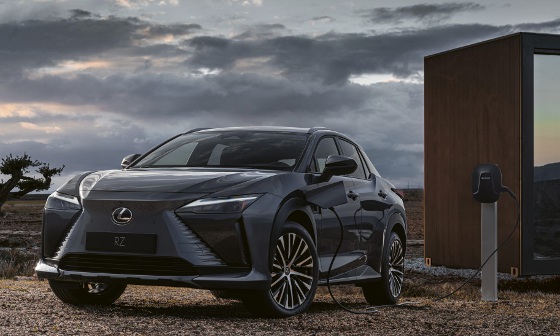
The DIRECT4 distribution control uses wheel vehicle speed, acceleration, and steering angle sensor information to control front-to-rear drive force ratio distribution between 100:0 and 0:100. This contributes to improved start-up acceleration, handling stability, and low power consumption. The system uses an approximate front-to-rear drive force ratio distribution between 60:40 and 40:60 to minimize vehicle pitch during launch and straight-line acceleration, thereby achieving a direct acceleration feel. Vital information such as cornering speed and steering angle help to optimize drive force distribution according to various driving conditions and helps attain excellent handling stability.
The newly developed eAxle fully integrates the motor, transaxle, and inverter within a compact unit. The front eAxle is packaged with a short front/rear system layout, while the rear eAxle features a low-profile layout contributing to increased interior and cargo space. In addition, the use of a high-efficiency inverter having an element in the rear contributes to an increase in cruise range.
A new pressurization unit enables coordinated front and rear regenerative braking through independent front and rear hydraulic control. The new braking system aims to provide seamless, direct, and controlled braking under the direction of the Lexus Driving Signature.
In the near future, the company says it aims to offer a Lexus-first Steer by Wire system that enables the electronic exchange of steering and road surface information between the advanced steering control and tires via electrical signals, not mechanical linkage. A new yoke steering wheel will also be available for this option.
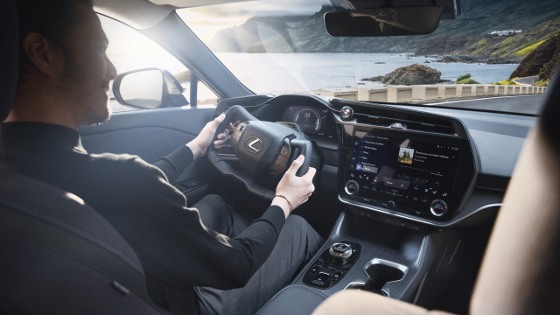
The control's steering angle is set at approximately 150 degrees, thus greatly reducing the driver's workload and eliminating the need for hand-over-hand operation at intersections, U-turns, parking, winding roads, and other driving situations.
In addition to the vehicle's overall maneuverability, the system provides nimble and agile performance by optimizing the steering gear ratio according to vehicle condition.
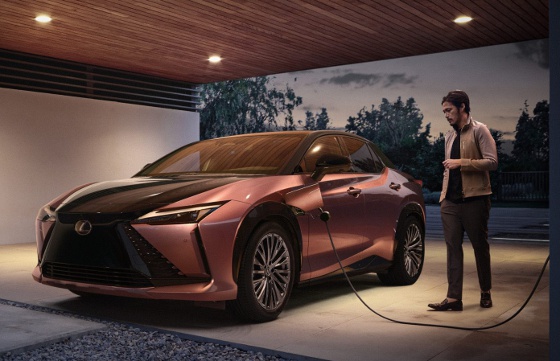
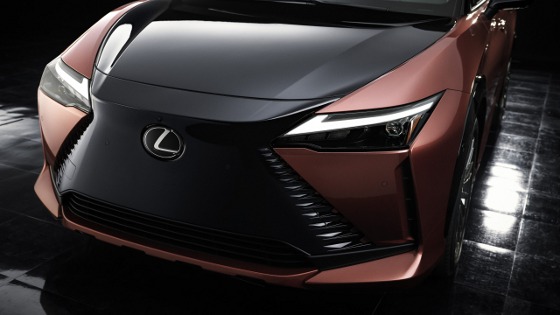
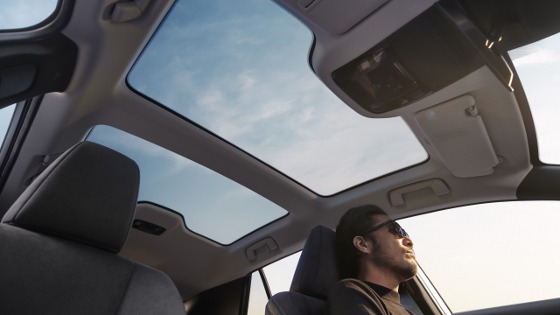
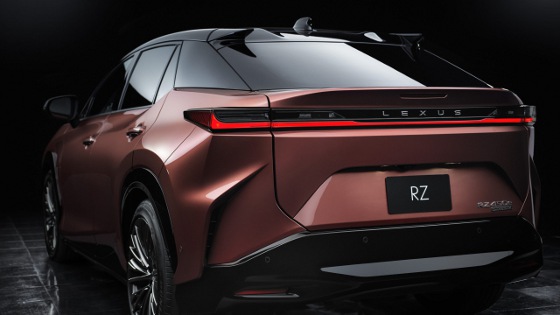
RZ utilizes a Lexus-first, dedicated BEV platform called e-TNGA. The platform offers stability and ride comfort by mounting the 71.4-kWh battery under the vehicle floor, creating a low center of gravity. The body is strengthened by reinforcing the radiator support area and adding a V-shaped brace for excellent handling performance. In addition, the tow bar and fender braces improve steering response, while the reinforcement in the lower back section improves rear tracking.
Laser screw welding, structural adhesives, and laser peening welding technologies are proactively used to join the body frame to improve handling stability and ride comfort. The addition of a double ring structure and a highly rigid foaming agent prevents distortion to reduce deformation of the rear luggage opening.
Up front, RZ rides atop a MacPherson strut-type suspension, while its rear uses a trailing arm double wishbone configuration. For the first time, Lexus uses Frequency Reactive Dampers (FRD), a frequency-sensitive absorber that alters the dampening force on the extension stroke in response to road surface frequency input. The FRD setup gives a high level of handling stability without compromising ride comfort.
Lexus engineers have also created expressive in-cabin sounds to convey the exhilaration of driving. Engineers matched sound frequencies to the vehicle's speed and sound levels during dynamic actions such as acceleration.
In addition, the underfloor battery functions as a sound barrier, and the entire perimeter of the hood opening is sealed to eliminate noise caused by turbulent airflow. Unwanted noise is also suppressed through the use of front/rear seat acoustic glass, and a new weatherstripping cross-section creates a quiet, conversation-friendly space, even when driving at high speeds.
The RZ uses the latest Lexus Safety System+ 3.0 set of driving aids, including standard Pre-Collision System, Dynamic Radar Cruise Control, Lane Departure Alert, and Emergency Driving Stop System.
Inside, the design is up-scale minimalist. The cabin welcomes its passengers with an airy feeling and intuitive controls specifically oriented around the driver. The space is luxurious thanks to its crafted touches and advanced technologies. In addition, the cabin features a standard panoramic roof which visually opens the space, while passenger comfort is improved by a highly efficient heating system featuring a Lexus-first radiant heater.
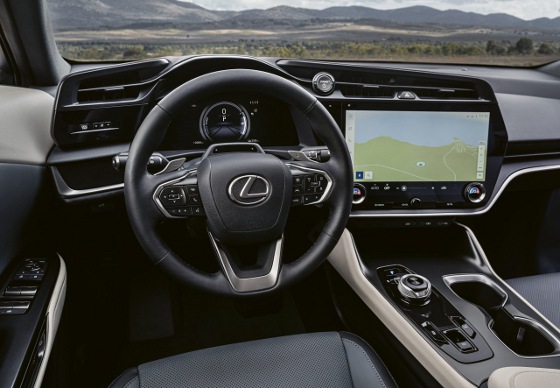
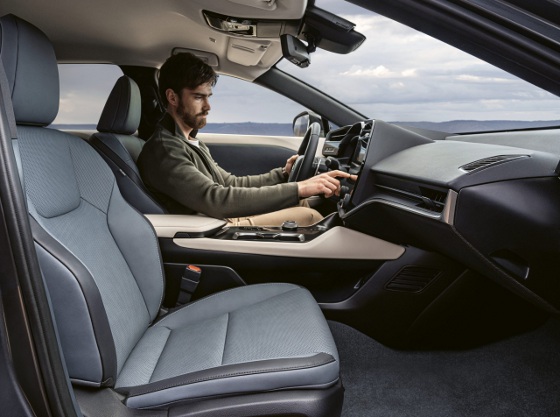
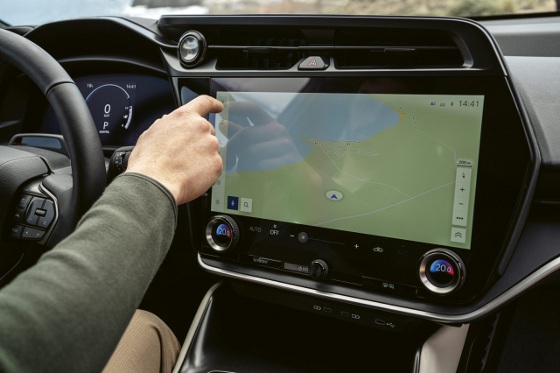
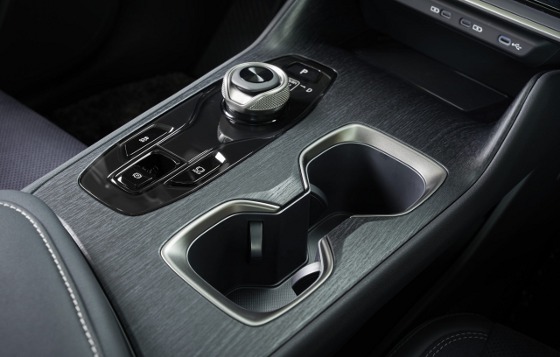
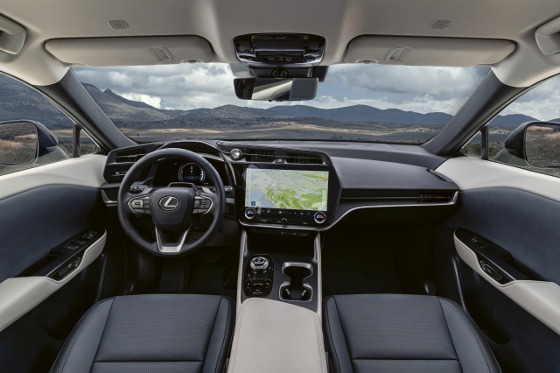
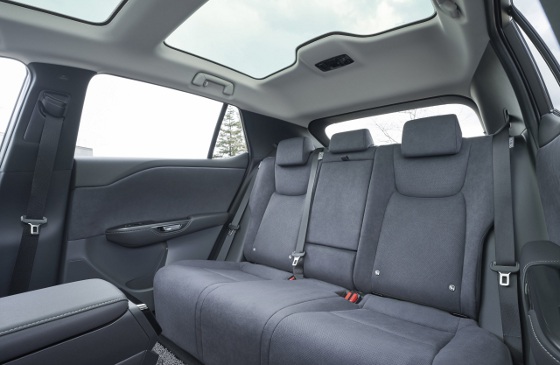
The rearward peaked cabin silhouette allows for ample rear headroom, providing a sense of spaciousness for the passengers. The standard panoramic roof further lends a sense of wide openness and front-to-rear expansiveness.
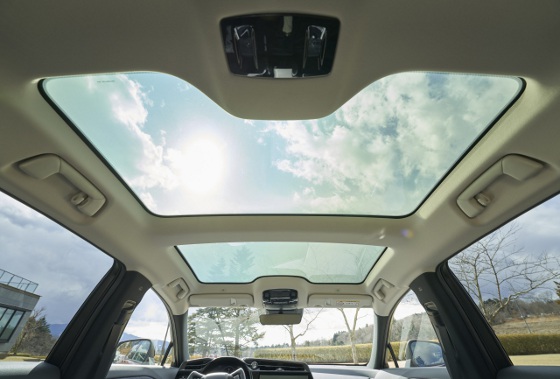
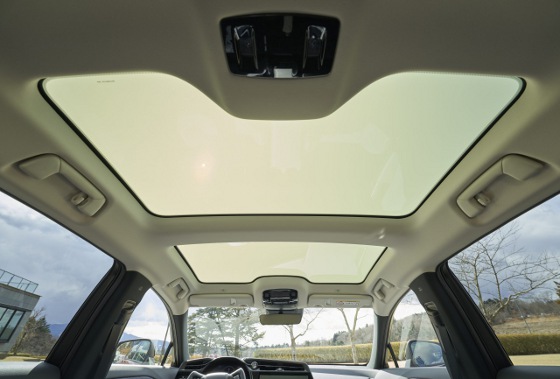
Two types of seat materials are used, including Ultrasuede, an upholstery material that lends a sense of warm refinement using 30% bio-based sustainable materials. The combination of a clean, modern space and simple surfaces with a focus on texture expresses a welcoming sense of freedom.
The front cockpit, based on the tazuna concept, advances Lexus' human-centered philosophy. Tazuna represents the reins riders use to control horses. With steering wheel switches that are synced with the available Head-Up Display (HUD), drivers can control functions such as navigation, audio, and drive mode select while concentrating on driving.
Lexus has not released pricing for the RZ 450e, but Consumer Reports estimates it will start in the $55,000 to $70,000 range.
Learn more at lexus.com/future/RZ.
*Lexus does already sell an electric version of an entry-level SUV (UX) in limited European markets.
Source: Lexus, Consumer Reports (estimate pricing only)
Published April 2022
Rate this article
View our terms of use and privacy policy
